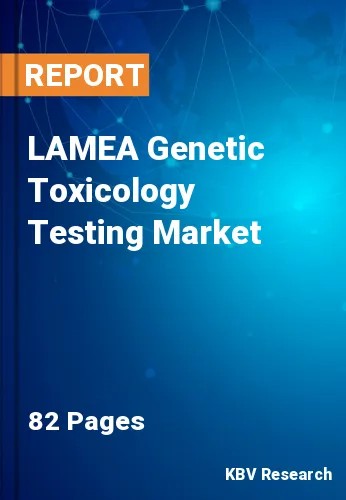The Latin America, Middle East and Africa Genetic Toxicology Testing Market would witness market growth of 19.4% CAGR during the forecast period (2022-2028).
Numerous commonplace conventional genotoxicity assays were created over 30 years ago with already available tools. A gold benchmark for predicting genotoxicity is provided by the consistency and reliability of these assays. The promise of quicker, more accurate, and more informative assays is brought about by the quick invention of novel technology and its incorporation into scientific assays.
Some of the most recent mechanized high-content flow cytometric approaches can be used for genetic toxicity testing today and in the future. The development of new tools and information aims to speed up production, cut costs, and boost accuracy, ultimately resulting in the creation of safer chemicals. Finally, whether regulators will embrace data from new methodologies to inform risk assessment is a crucial factor in the development of new methodologies and risk assessment approaches.
In comparison to present testing methods, the new procedures are said to involve fewer animals, increase understanding of the mechanisms of action, improve human relevance, and provide a higher chemical throughput. A genetic toxicology test reveals risks and possible results. The safety profile of a chemical series is characterized by chemical testing initially in a developmental phase, yielding information that can guide further development and lower the likelihood of late-stage toxicological failure.
In South Africa, The National Health Laboratory Service, provincial health agencies, and university institutions house the majority of the well-organized and modest genetic services. The service can be provided by medically trained geneticists and counsellors, and medical scientists. Additionally, this laboratory is a vital source of information on genetic toxicology trends in the region. In a recent article published in the Journal of Personalized Medicine with the title "Genomics and pharmacogenomics knowledge, attitude and practice of pharmacists operating in the UAE", the knowledge, perception, and practice of genomic medicine and pharmacogenomic testing were evaluated.
The Brazil market dominated the LAMEA Genetic Toxicology Testing Market by Country in 2021; thereby, achieving a market value of $54.1 million by 2028. The Argentina market is showcasing a CAGR of 20% during (2022 - 2028). Additionally, The UAE market would register a CAGR of 19.1% during (2022 - 2028).
Based on Product, the market is segmented into Services, Reagents & Consumables and Assays. Based on Type, the market is segmented into In Vitro and In Vivo. Based on Application, the market is segmented into Pharmaceutical & Biotechnology, Food Industry, Cosmetics Industry and Others. Based on countries, the market is segmented into Brazil, Argentina, UAE, Saudi Arabia, South Africa, Nigeria, and Rest of LAMEA.
Free Valuable Insights: The Global Genetic Toxicology Testing Market is Predict to reach $2.4 Billion by 2028, at a CAGR of 13.2%
The market research report covers the analysis of key stake holders of the market. Key companies profiled in the report include Thermo Fisher Scientific, Inc., Charles River Laboratories International, Inc., Laboratory Corporation of America Holdings, Eurofins Scientific Group, Jubilant Pharmova Limited., Syngene International Limited, Gentronix Ltd., Inotiv Inc., Creative Bioarray and MB Research Laboratories.
By Product
By Type
By Application
By Country
Our team of dedicated experts can provide you with attractive expansion opportunities for your business.

